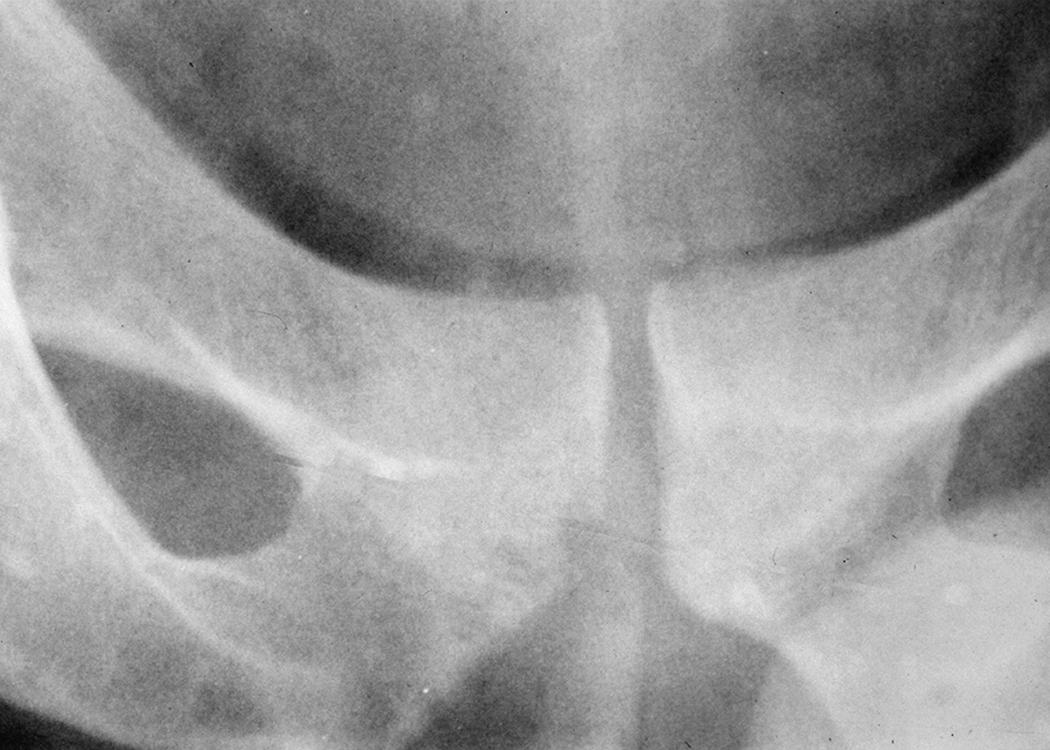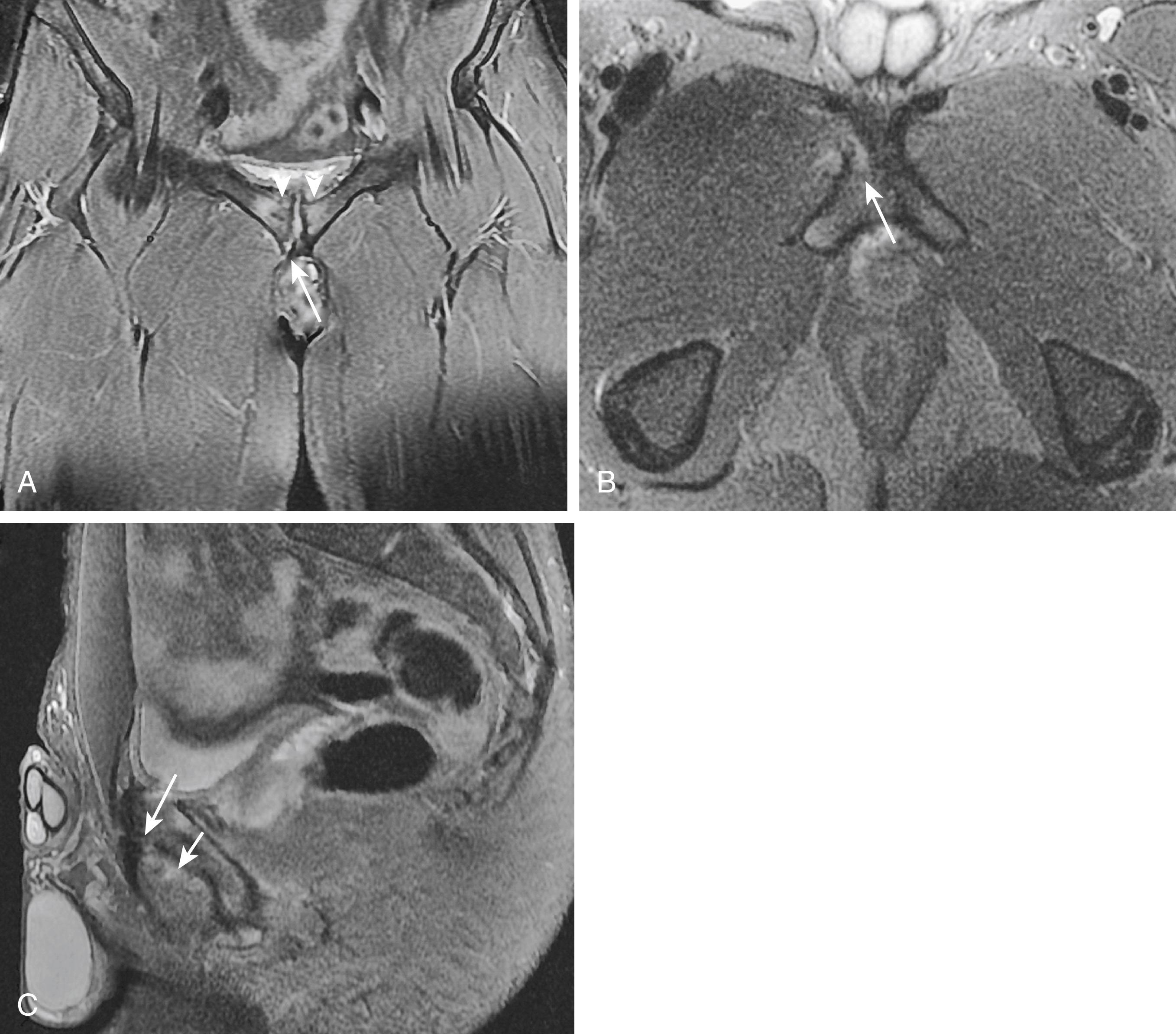Physical Address
304 North Cardinal St.
Dorchester Center, MA 02124
Osteitis pubis is a constellation of symptoms that includes a localized tenderness over the symphysis pubis, pain radiating into the inner thigh, and a waddling gait. Characteristic radiographic changes of erosion, sclerosis, and widening of the symphysis pubis are pathognomonic for osteitis pubis ( Fig. 139.1 ). A disease of the second through fourth decades, osteitis pubis affects women more frequently than men. It occurs most commonly after bladder, inguinal, or prostate surgery and is thought to be caused by hematogenous spread of infection to the relatively avascular symphysis pubis. It can appear without obvious inciting factors or infection. A pain syndrome clinically similar to osteitis pubis can occur in patients with rheumatoid arthritis and ankylosing spondylitis but without the characteristic radiographic changes of osteitis pubis.

On physical examination, the patient exhibits point tenderness over the symphysis pubis. The patient may have tenderness over the anterior pelvis and may note that the pain radiates into the inner thigh with palpation of the symphysis pubis. Patients may adopt a waddling gait to avoid movement of the symphysis pubis. This dysfunctional gait may result in lower extremity bursitis and tendinitis, which may confuse the clinical picture and further increase the patient’s pain and disability.
Plain radiographs are indicated for all patients with pain thought to be emanating from the symphysis pubis to rule out occult bony disease and tumor. On the basis of the patient’s clinical presentation, additional testing may be indicated, including complete blood cell count, prostate-specific antigen, sedimentation rate, and antinuclear antibody testing. Magnetic resonance imaging and ultrasound imaging of the pelvis are indicated if occult mass or tumor is suggested, as well as to confirm the diagnosis ( Fig. 139.2 ). Radionuclide bone scanning may be useful to rule out stress fractures not seen on plain radiographs and to confirm the diagnosis ( Fig. 139.3 ). The injection technique presented later serves as both a diagnostic and a therapeutic maneuver.


The symphysis pubis is a cartilaginous joint that provides articulation between the 2 pubic bones. The interpubic fibroelastic cartilage connects the 2 opposing articular surfaces of the pubic bones ( Fig. 139.4 ). These articular surfaces have thin layers of articular cartilage that are subject to damage or inflammation. The joint is relatively avascular, which accounts for the difficulty in treating joint space infections of the symphysis pubis. The joint is strengthened by a variety of ligaments, including the superior pubic ligament, which connects the top of the joint, and the arcuate ligament, which strengthens the joint from below. These ligaments are subject to disruption from blunt trauma to the pelvis, including seatbelt injuries.

Become a Clinical Tree membership for Full access and enjoy Unlimited articles
If you are a member. Log in here